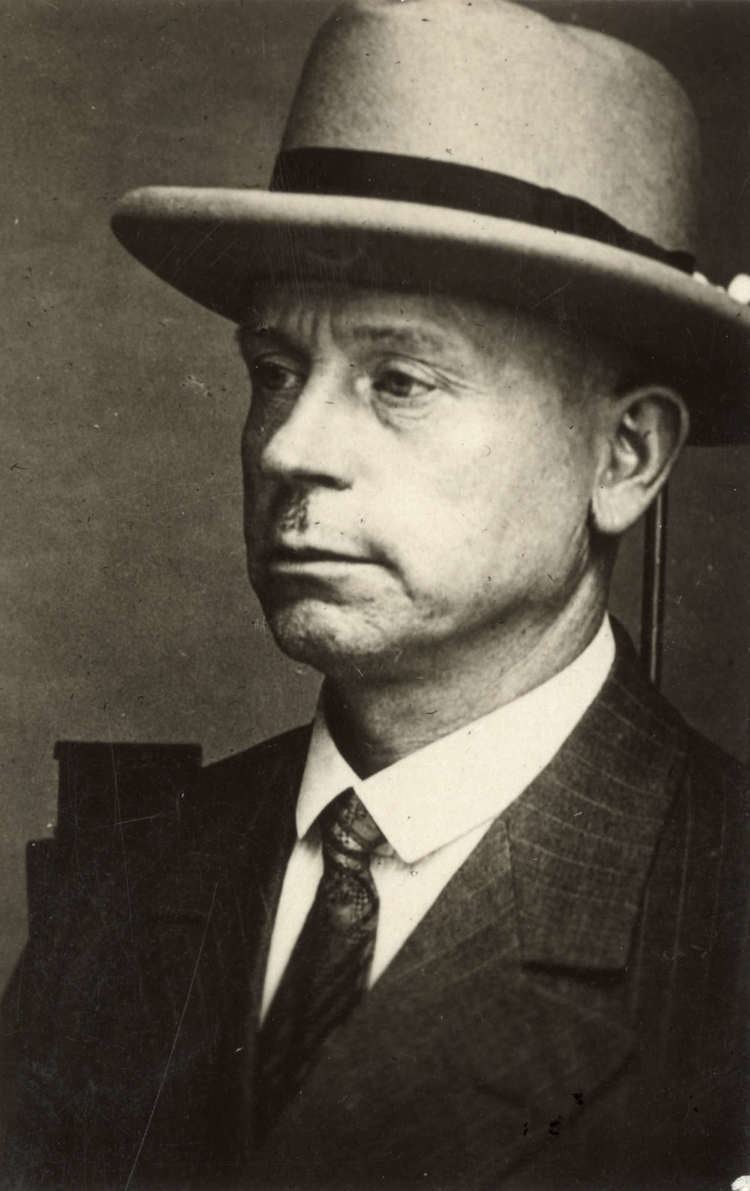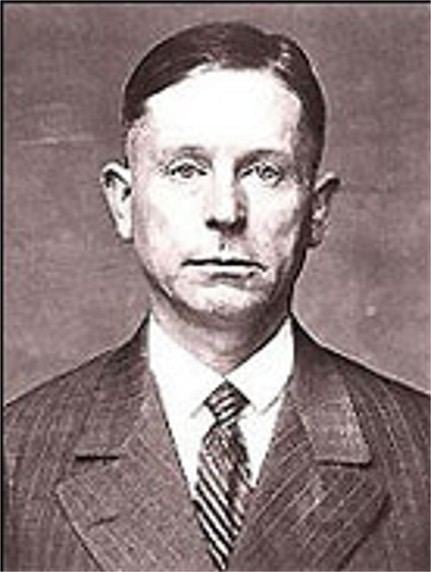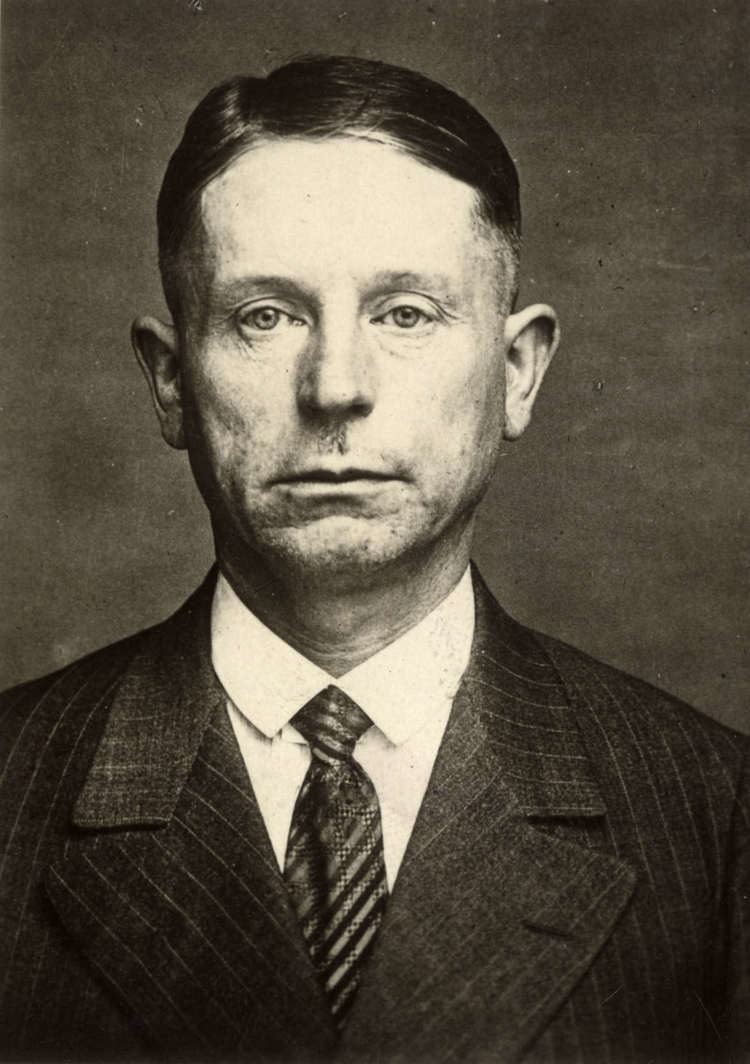Name Peter Kurten Criminal penalty Capital punishment | Role Serial Killer Date apprehended May 24, 1930 | |
 | ||
Born May 26, 1883 ( 1883-05-26 ) Mulheim am Rhein, Germany Cause of death Decapitation by guillotine Other names The Vampire of DusseldorfThe Dusseldorf Monster Motive Sexual gratification / to "strike back at oppressive society" Conviction(s) ArsonAttempted murderBurglaryTheftMurder Victims Murders: 9 (or more)Attempted: 20 (or more)Sexual assaults: unknown Span of killings 26 May 1913–7 November 1929 Died July 2, 1931, Cologne, Germany Similar People Fritz Haarmann, Albert Fish, Karl Denke, Carl Grosmann, Ernst Gennat | ||
Peter Kurten - The Vampire Of Dusseldorf
Peter Kurten (26 May 1883 – 2 July 1931) was a German serial killer known as both The Vampire of Dusseldorf and the Dusseldorf Monster, who committed a series of murders and sexual assaults between February and November 1929 in the city of Dusseldorf.
Contents
- Peter Kurten The Vampire Of Dusseldorf
- PETER KURTENS HEAD
- Early life
- Murders
- Trial and execution
- Analysis
- References

In the years prior to these assaults, Kurten had amassed a lengthy criminal record for offenses including arson, theft and attempted murder. He also confessed to the 1913 murder of a 9-year-old girl in Mulheim am Rhein.

Kurten became known as both the The Vampire of Dusseldorf and the Dusseldorf Monster because the majority of his murders were committed in and around the city of Dusseldorf. He was considered a vampire because he drank the blood of a killed swan in December 1929 and he also made attempts to drink the blood of some of his human victims.
PETER KURTEN'S HEAD
Early life

Peter Kurten was born into a poverty-stricken, abusive family in Mulheim am Rhein, as the third eldest of thirteen children. As a child, he witnessed his alcoholic father repeatedly sexually assault his mother and his sisters. He engaged in petty criminality from a young age, and was a frequent runaway. He later claimed to have committed his first murders at the age of nine, when he drowned two young boys with whom he had been swimming.
Kurten moved with his family to Dusseldorf in 1894 and from 1899 he received a number of short prison sentences for various crimes, including theft and arson.
Kurten progressed from torturing animals to attacks on people. He committed his first recorded murder in 1913, strangling a 9-year-old girl, Christine Klein, during the course of a burglary. He managed to get away undiscovered. His crimes were then halted by an eight-year prison sentence for several more thefts. In 1921, he left prison and moved to Altenburg, where he got married in 1923. In 1925, he returned with his wife to Dusseldorf, where he began the series of crimes that would culminate in his capture, trial, death sentence and subsequent execution.
Murders
On 2 February 1929, he assaulted a woman; on 9 February he molested and murdered a nine-year-old girl. On 13 February, he murdered a middle-aged mechanic, stabbing him 20 times. Kurten did not commit another deadly attack for six months, until 11 August when he raped and killed a woman. In the early morning of 21 August he stabbed three people in separate attacks within 15 minutes. Three days later he murdered two girls, aged five and 14, and stabbed another woman on 25 August.
On 29 September, he committed rape and murder, brutally beating a servant girl with a hammer in a wooded area outside of Dusseldorf.
On 11 October, he attacked a woman with a hammer, raped her and left her for dead. On 25 October, he attacked two women with a hammer; both survived. On 7 November, he murdered a five-year-old girl by strangling and stabbing her multiple times with scissors.
Various times he sent a map to a local newspaper or the local police disclosing the location of one of his victims' graves.
The variety of victims and murder methods gave police the impression that more than one killer was at large: the police had over 900,000 different names on their potential suspect list.
The November murder was Kurten's last, although he did engage in a spate of non-fatal hammer attacks from February to March 1930. In May, he accosted a young woman named Maria Butlies; he initially took her to his home, and then to the Grafenberger Woods, where he raped (but did not kill) her. Butlies led the police to Kurten's home. He avoided the police, but confessed to his wife, knowing that his identity was known by the police. On 24 May, he was located and arrested.
Kurten also admitted to drinking the blood of at least one of his victims.
Trial and execution
Peter Kurten was charged with nine murders and seven attempted murders. He went on trial in April 1931. He initially pleaded not guilty, but after some weeks changed his plea. He was found guilty and sentenced to death.
As Kurten was awaiting execution, he was interviewed by Dr. Karl Berg, whose interviews and accompanying analysis of Kurten formed the basis of his book, The Sadist. Kurten stated to Berg that his primary motive was one of sexual pleasure. The number of stab wounds varied because it sometimes took longer to achieve orgasm; the sight of blood was integral to his sexual stimulation as evidenced by his final words: "Tell me—after my head is chopped off, will I still be able to hear, at least for a moment, the sound of my own blood gushing from the stump of my neck? That would be the pleasure to end all pleasures."
Kurten was executed on 2 July 1931 by guillotine in Cologne.
Analysis
Peter Kurten said to the legal examiners that his primary motive was to "strike back at oppressive society." He did not deny that he had sexually molested his victims, but he always claimed during his trial that this was not his primary motive.
In 1931, scientists attempted to examine irregularities in Kurten's brain in an attempt to explain his personality and behavior. His head was dissected and mummified and is currently on display at the Ripley's Believe It or Not! museum in Wisconsin Dells, Wisconsin.
